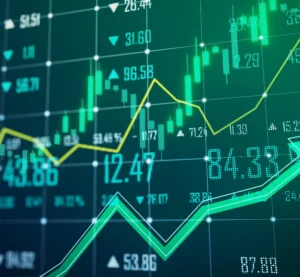On April 9, 2025, the S&P 500 experienced a remarkable surge of 9.5%, marking one of its most significant single-day gains since World War II. This extraordinary rally was primarily driven by President Donald Trump’s unexpected announcement of a 90-day suspension of tariffs on most nations, while simultaneously escalating tariffs on Chinese imports.
The Tariff Policy Shift
In response to escalating market volatility and mounting economic concerns, President Trump declared a temporary reduction in tariffs for numerous countries. This 90-day pause involved lowering tariffs to a baseline of 10%, aiming to alleviate tensions and provide a window for negotiations. Conversely, tariffs on Chinese imports were significantly increased to 125%, intensifying the ongoing trade dispute between the United States and China.
Treasury Secretary Scott Bessent emphasized that this strategic move was designed to strengthen the United States’ negotiating position, indicating that future trade discussions would be tailored to each country’s specific circumstances.
Market Reaction and Economic Implications
The announcement had an immediate and profound impact on financial markets. The S&P 500’s 9.5% surge was accompanied by substantial gains in other major indices:
- The Dow Jones Industrial Average soared by nearly 3,000 points, an 8% increase.
- The Nasdaq Composite Index experienced a 12% rise, marking its second-largest increase ever.
Investors responded positively to the tariff suspension, viewing it as a potential de-escalation of trade tensions and a move towards greater economic stability. Financial leaders, including Jamie Dimon and Bill Ackman, had previously expressed concerns about the detrimental effects of ongoing tariffs, highlighting the significance of this policy shift.
Despite the market’s enthusiastic response, analysts cautioned that the economic damage and uncertainty from previous tariff escalations might persist. The increased tariffs on Chinese imports raised concerns about potential retaliatory measures from Beijing, which could further complicate international trade relations.
International Response and Future Outlook
The international community had mixed reactions to the United States’ new tariff strategy. Major U.S. allies and trade partners welcomed the temporary pause and expressed readiness to engage in negotiations. However, countries like Canada and Mexico remained subject to tariffs of up to 25% due to separate policy disputes, particularly related to drug-related issues.
The European Union and other major economies began contemplating or initiating retaliatory tariffs, reflecting the complex and often contentious nature of global trade dynamics. The World Trade Organization warned of potential significant reductions in U.S.-China trade, underscoring the broader economic risks.
As the 90-day tariff suspension period unfolds, the focus will be on the outcomes of the ensuing trade negotiations. The administration’s approach suggests a strategic recalibration aimed at addressing trade imbalances and fostering more favorable terms for the United States. However, the heightened tariffs on Chinese goods indicate that certain trade conflicts remain unresolved and may continue to pose challenges to global economic stability.
In conclusion, the S&P 500’s historic surge reflects the market’s immediate optimism in response to President Trump’s tariff policy adjustments. While this move has provided a temporary boost to investor confidence, the long-term implications will largely depend on the outcomes of forthcoming trade negotiations and the ability of all parties to navigate the complexities of international commerce.



